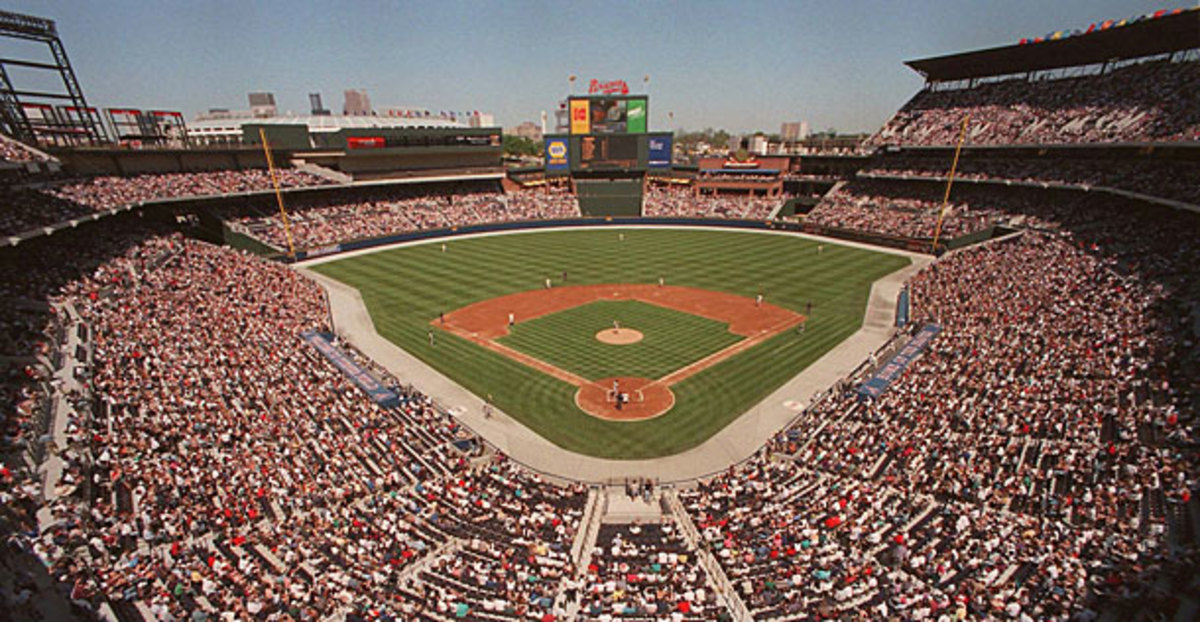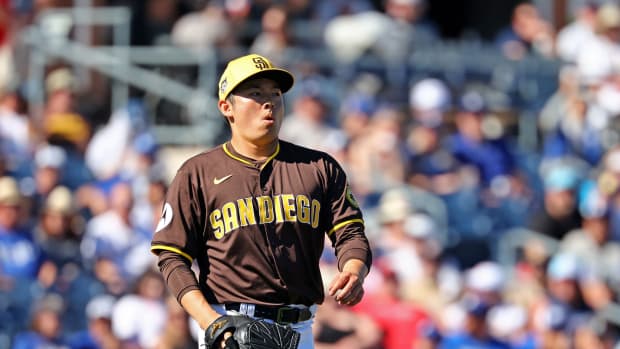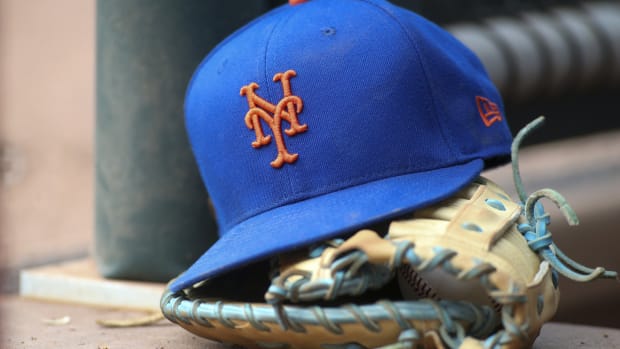Braves will move to Cobb County in shocking move
The Braves have only been playing at Turner Field since the start of the 1997 season. (Rick Feld/AP)
The Braves are moving… again. This time, however, the franchise that called Boston and Milwaukee home before relocating to Atlanta for the 1966 season isn't going very far. On Monday, team president John Schuerholz and two other executives told reporters that the franchise will build a new stadium in Cobb County, roughly 15 miles away from Turner Field, and begin playing there in 2017, after their current lease expires, with construction to start in mid-2014.
That's a shock, in that the Braves have only been playing in Turner Field — which was built for the 1996 Summer Olympics — since 1997. Such a move will make it the first of the 24 major league ballparks to open since 1989 to be replaced, and buck the trend of teams returning to urban centers. The proposed park is in the suburbs and closer to the geographic center of the team's ticket-buying fan base, a much higher percentage of which happens to be white. US Census figures from 2010 put Fulton County at 44.5 percent white and 44.1 percent black, while Cobb County is 62.2 percent white and 25.0 percent black.
The lion's share of the $672 million facility -- a whopping $450 million -- will be financed by the county, which will presumably pass that cost on to taxpayers, while the team will kick in just $200 million. By comparison, the current venue, which was originally built as Centennial Olympic Stadium with a capacity of 85,000, was financed by the Atlanta Committee for the Olympic Games — completely with private money — and then retrofitted for the Braves after the Summer Olympics ended.
The NFL's Falcons recently gave taxpayers a better deal than the Braves will, at least according to initial reports. Last month, they announced a downtown Atlanta stadium to open in 2017 that will cost $1.2 billion, of which $800 million to $1 billion will be covered by the NFL and by personal seat licenses, with $200 million coming from bonds backed by a hotel-motel tax. (Update: Stadium subsidies expert Neil deMause has disputed that $200 million figure, estimating that via hidden subsidies it could be more than half a billion dollars.)
The Braves have enjoyed considerable success since moving to Turner Field, posting the majors' second-highest winning percentage (.571) since the start of the 1997 season. After closing out their 21-year run at Atlanta Fulton County Stadium with a 1995 world championship and a 1996 pennant, the team has won 10 division titles and earned two wild card spots in the 18 seasons since while finishing below .500 just twice.
Even so, they've been to only one World Series in that span (1999) and haven't won a playoff series since 2001, and there's long been a sense that local fans take the team's success for granted. After ranking in the National League's top four in attendance in Turner's first four years — with over three million fans in each — the Braves have ranked between eighth and 10th (out of 15 or 16 teams) in each of the past 10 years. In 2013, they ranked eighth, drawing a paid attendance of 2,548,679. That's an average of 31,465 per game, which is well below Turner's capacity of over 50,000. Their 2013 season high was 52,716, which topped both their 2012 wild card appearance (52,631) and Game 1 of this year's Division Series (43,021). The new park will seat 41,000 to 42,000, a figure in line with the team's 1997-99 attendance peak.
One factor apparently driving the move is the need for significant investment in the current venue. From the team's new website devoted to the project, Home of the Braves (clever, right?):
Turner Field has served the Braves well since 1997, but it is in need of major infrastructure work, which will cost around $150 million. These upgrades are functional ones, such as replacing worn-out seats or upgrading the stadium’s lighting, and they would do little to significantly enhance the fan experience. If the Braves were to pay for additional projects focused on improving the fan experience, the additional costs could exceed $200 million.
Those upgrades still wouldn’t address the logistical challenges outside the stadium -- lack of consistent mass transit options, inadequate number of parking spaces and limited access to major highways.
Perhaps not surprisingly, critics of the original Turner Field deal anticipated such a problem nearly two decades ago. From a July 30, 1996 article in theNew York Times:
Emma Darnell, a Fulton County commissioner, railed against the deal partly for the Braves' refusal to pay for future capital costs beyond 20 years. "Our experience with Fulton County stadium is that after 20 years, costs rise," she said. "Taxpayers will be exposed."
So instead of sinking $350 million into fixes to modernize Turner, the Braves are spending $200 million for a new park, with much of that cost likely to be covered by the development of the surrounding area and the sale of naming rights. Notably, Turner is one of just eight venues that doesn't have such a deal in place. According to a New York Times piece from July, the Atlanta Hawks get $12 million a year for the naming rights to their venue, currently known as Philips Arena. The largest baseball deal is that of the Mets for Citi Field ($21 million per year), though the dropoff from that figure to the second-largest, Houston's Minute Maid Park ($7.4 million), is steep.
The new venue is at the intersection of Interstates 75 and 285, said to be a major traffic snarl, "the place so congested we Cobb Countians know to avoid if at all possible," as the Journal-Constitution's Mark Bradley described it. The county has resisted the expansion of the Metropolitan Atlanta Rapid Transit Authority (MARTA) into its domain since its inception in 1971, so it's not served by light rail, and while the team claims "significantly increased access to the site" via Home of the Braves, it offers no specifics on the matter.
In all, while the announcement of the new ballpark is good news for many suburban Braves fans, it's unsettling for the industry as a whole. The Oakland A's have spent the past decade battling for a new park to replace the dilapidated Coliseum, which they've called home since 1966, while the Tampa Bay Rays are hamstrung by the location of Tropicana Field. Both franchises would take Turner Field as their home in a heartbeat if it could be shipped to them.




































